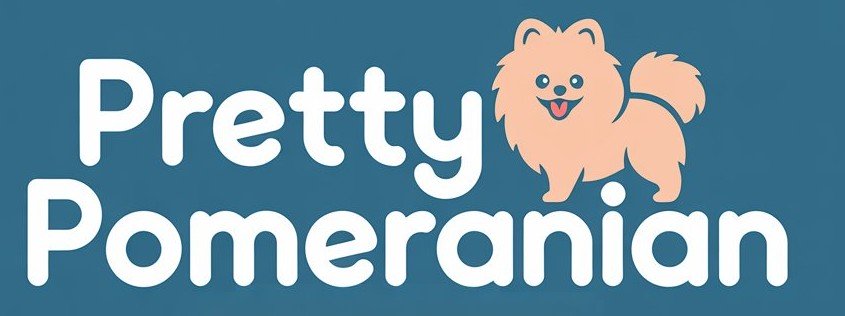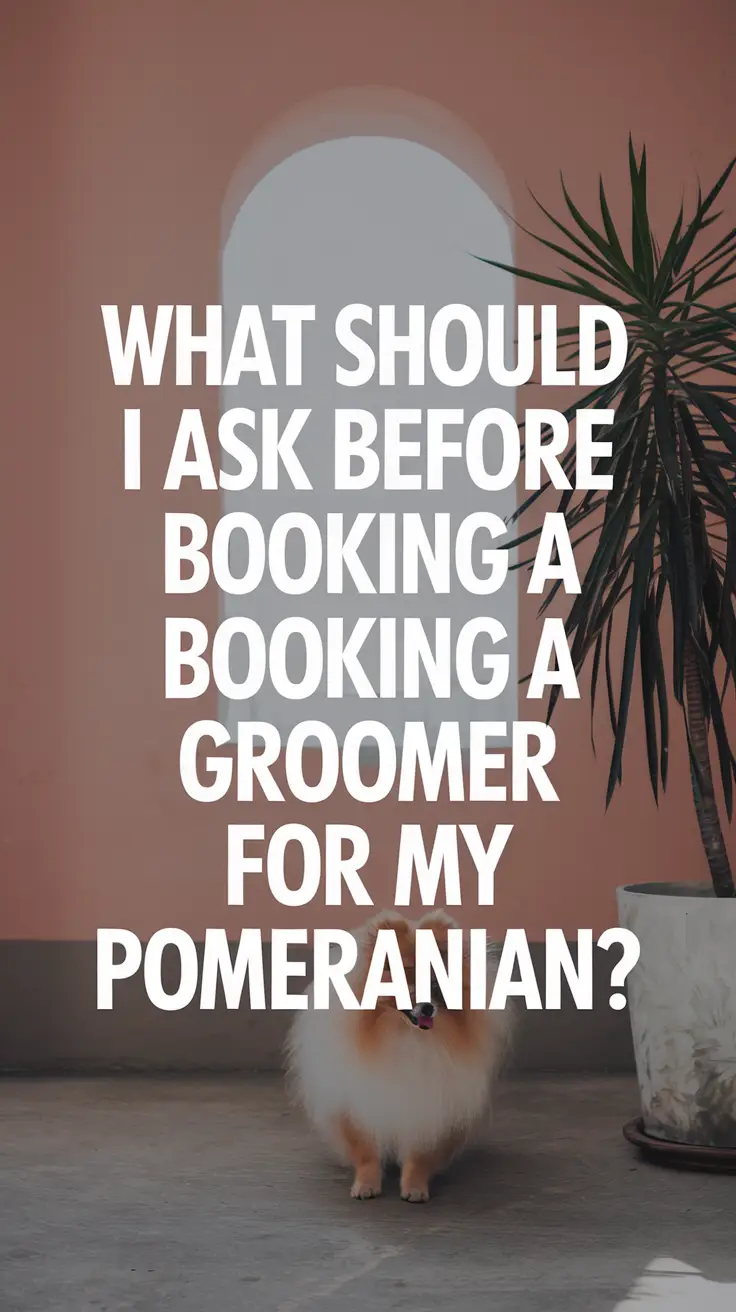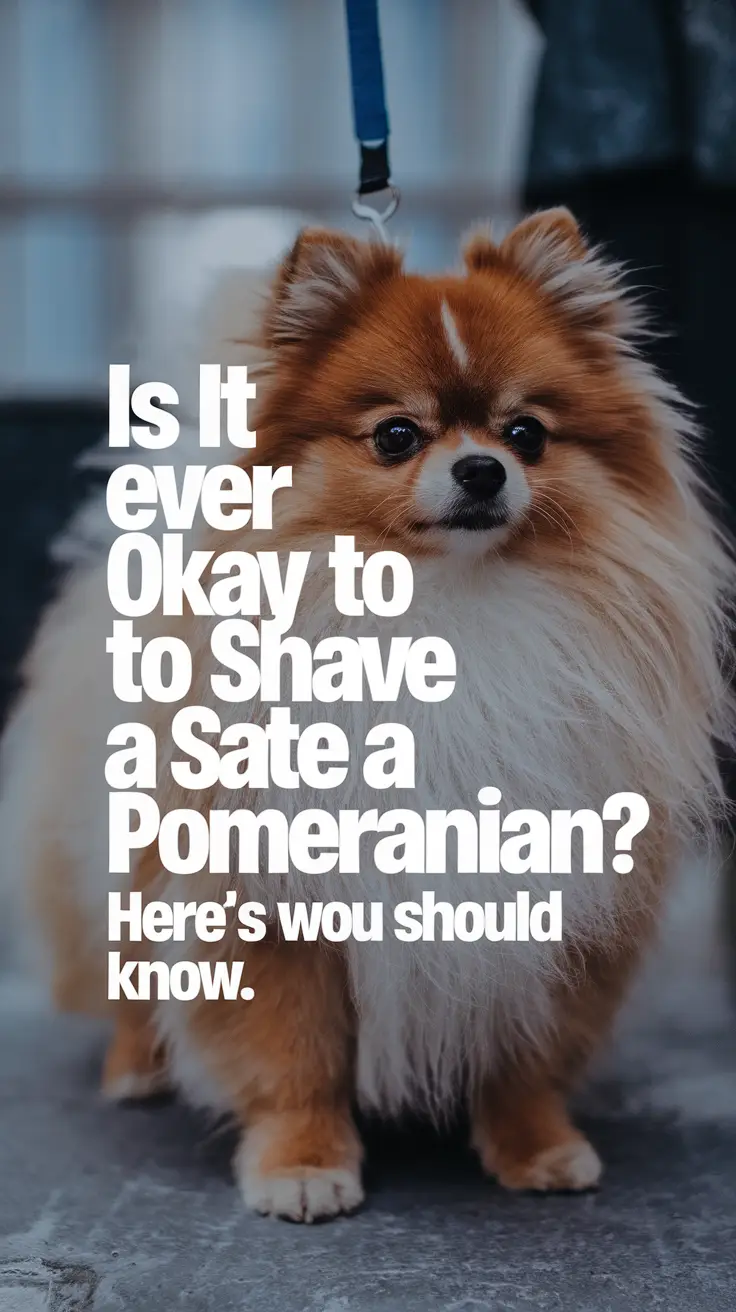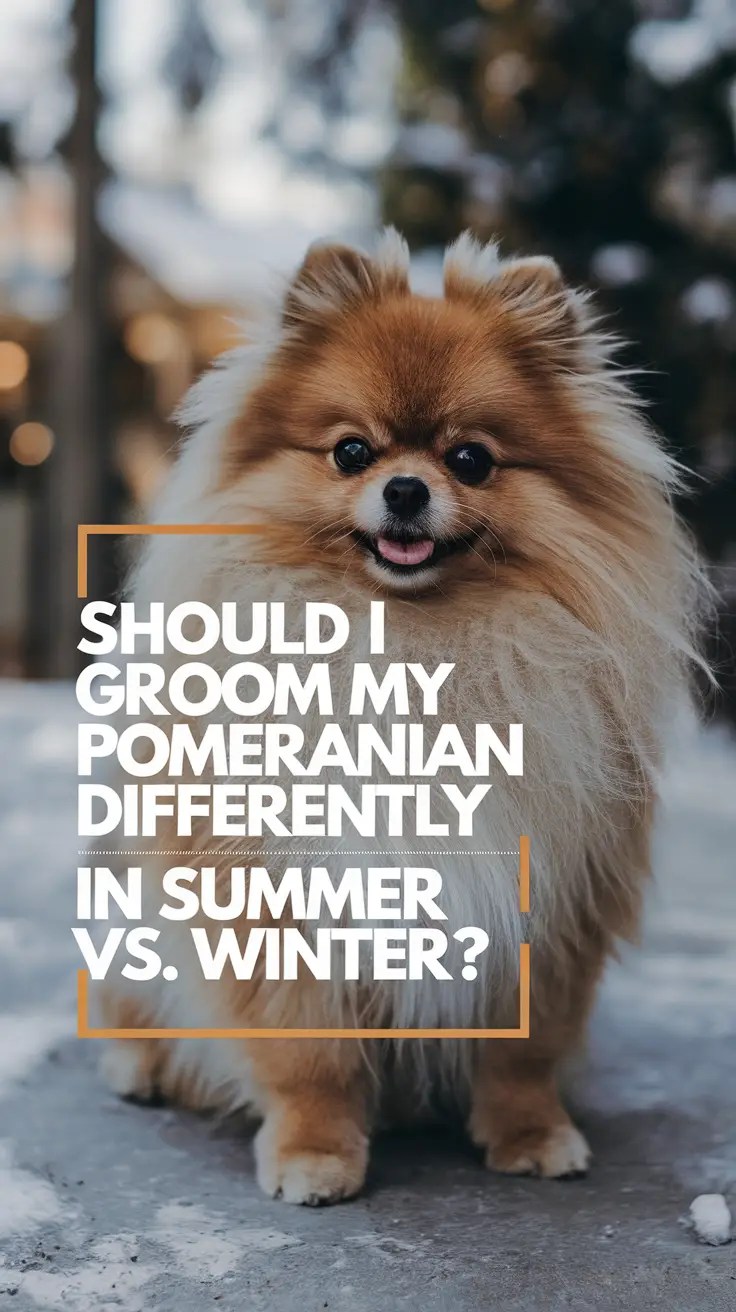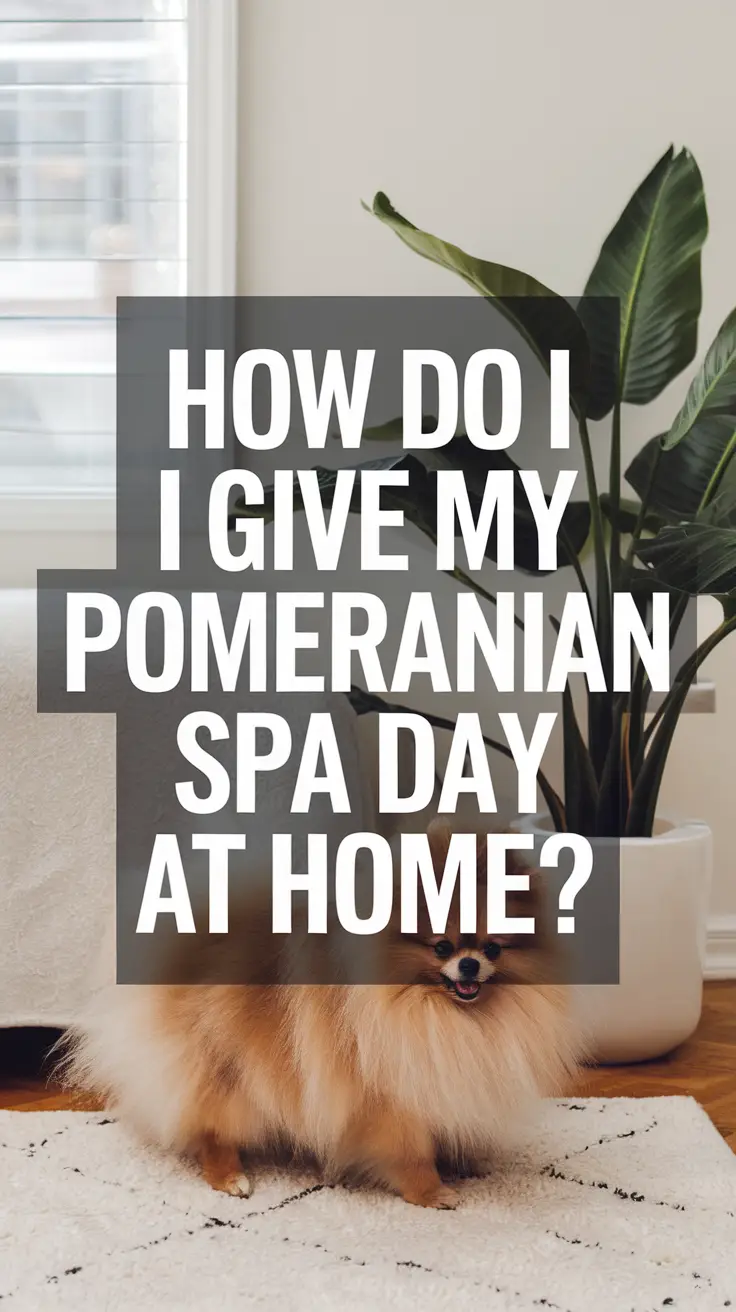Nothing breaks my heart quite like seeing a once-magnificent Pomeranian looking like they’ve been through a tumble dryer set on “chaos.” After twelve years with my beloved Sash, I’ve learned that maintaining that signature Pomeranian fluffiness isn’t just about good genes – it’s about understanding your little lion’s unique coat needs and staying ahead of the grooming game.
Quick Summary: The Fluff Formula
- Master the art of proper brushing technique and frequency
- Feed your Pom’s coat from the inside out with targeted nutrition
- Navigate professional grooming without losing that essential double-coat magic
The Science Behind the Fluff
Pomeranians sport what grooming professionals call a “double coat” – a soft, dense undercoat topped with longer guard hairs. This isn’t just pretty packaging; it’s a sophisticated temperature regulation system inherited from their Arctic spitz ancestors. When Sash first came home, I made the rookie mistake of thinking more brushing equaled better fluff. Wrong! I was actually damaging her coat structure by over-brushing and using the wrong tools.
According to the American Kennel Club breed standards, a Pomeranian’s coat should stand off from the body, creating that distinctive “powder puff” silhouette. This happens when the undercoat is healthy enough to support the outer guard hairs – something that requires specific care techniques.
The Daily Brush Ritual
Here’s where most Pom parents go astray: they either brush too aggressively or skip days thinking their dog’s short stature means less maintenance. Sash taught me otherwise when she developed her first mat behind her ear. That tiny tangle turned into a grooming nightmare that required professional intervention.
Essential Brushing Tools
| Tool | Purpose | Frequency | Pro Tip |
|---|---|---|---|
| Slicker Brush | Daily maintenance, removes loose undercoat | Daily | Use light pressure – let the brush do the work |
| Pin Brush | Fluffs outer coat, final styling | Daily | Great for that “just groomed” look |
| Metal Comb | Detail work, checking for mats | 2-3 times weekly | Essential for behind ears and leg feathering |
| Undercoat Rake | Deep cleaning during shedding seasons | Weekly during coat blows | Use sparingly – can damage coat if overused |
The key is working in sections, always brushing in the direction of hair growth, then against it to lift and fluff. I learned this technique from master groomer Patricia Williams, who reminded me that “patience creates perfection – rushing creates tangles.”
Nutrition: Feeding the Fluff Factory
Sash’s coat transformation really began when I realized that her dull, flat fur was actually crying out for better nutrition. A Pomeranian’s coat is essentially a living reflection of their internal health. Poor nutrition shows up as brittle, lackluster fur that won’t hold that signature fluff no matter how much you brush.
Coat-Boosting Nutrients
- Omega-3 and Omega-6 fatty acids: Essential for coat shine and skin health
- High-quality protein: Builds strong hair shafts (aim for 25-30% protein content)
- Zinc and biotin: Support healthy hair growth cycles
- Vitamin E: Protects against environmental damage
I supplement Sash’s diet with a high-quality fish oil specifically formulated for small breeds. The difference became noticeable after about six weeks – her coat felt thicker, looked shinier, and held its fluff longer between grooming sessions.
The Professional Grooming Dilemma
Here’s where things get tricky. Many well-meaning groomers will suggest trimming or thinning your Pom’s coat, especially during warmer months. I fell into this trap once, allowing a groomer to “thin out” Sash’s undercoat with thinning shears. The result? Months of flat, lifeless fur that refused to fluff properly.
Grooming Do’s and Don’ts
| DO | DON’T | Why |
|---|---|---|
| Trim sanitary areas and paw pads | Shave or heavily thin the undercoat | Undercoat provides insulation and structure |
| Shape the outer coat minimally | Use thinning shears extensively | Creates uneven texture and reduces fluff |
| Maintain natural coat length | Give a “summer cut” | Can permanently damage coat regrowth |
| Focus on cleaning and nail trims | Rush the drying process | Proper drying technique enhances natural fluff |
Finding a groomer who understands spitz-type coats is crucial. I interview potential groomers like I’m hiring a nanny – because essentially, I am trusting them with Sash’s crowning glory.
Seasonal Coat Challenges
Pomeranians experience dramatic seasonal coat changes, particularly during spring and fall “coat blows” when they shed their undercoat. During Sash’s first major shed, I panicked thinking she was going bald. Clumps of undercoat came out with each brushing session, leaving temporary thin spots that made her look like a moth-eaten teddy bear.
This natural process requires adjusted care:
- Increase brushing frequency to twice daily during heavy shedding
- Use an undercoat rake more frequently to remove loose fur
- Consider professional deshedding treatments
- Boost nutrition with additional omega fatty acids
- Be patient – full coat regrowth takes 3-6 months
Environmental Factors That Flatten Fluff
Humidity is fluff’s enemy number one. I learned this during our first beach vacation when Sash emerged from our seaside hotel looking like she’d been deflated. High humidity causes the hair cuticles to absorb moisture, making the coat lie flat and lose its lift.
Fluff-Preserving Environmental Tips
- Use a dehumidifier in your home during humid months
- Apply a light coat spray with anti-humidity properties before outdoor adventures
- Avoid over-bathing (monthly is usually sufficient unless absolutely necessary)
- Use a high-velocity dryer after baths to ensure complete drying
- Store brushes in a dry environment to prevent transferring moisture to the coat
The Reality Check: Managing Expectations
Not every Pomeranian will achieve Instagram-worthy fluff levels, and that’s perfectly fine. Genetics play a significant role in coat quality and density. Sash has a naturally thicker coat than some of her Pom friends, but even she has occasional “flat hair days” that no amount of brushing can fix.
Some Pomeranians have softer, silkier coats that naturally lie closer to the body. Others may have sparser undercoats due to genetics or health factors. The goal isn’t to fight your dog’s natural coat type but to optimize whatever coat they have.
Red Flags: When to Consult Your Vet
Sudden coat changes can indicate underlying health issues. I became concerned when Sash’s normally lustrous coat became dry and brittle seemingly overnight. A vet visit revealed a minor thyroid imbalance that, once treated, restored her coat to its former glory.
Watch for:
- Sudden, dramatic coat texture changes
- Excessive shedding outside of normal seasonal patterns
- Bald patches or thinning areas
- Skin irritation or persistent scratching
- Coat that won’t respond to improved nutrition and grooming
The Long Game: Patience and Consistency
Maintaining Pomeranian fluff isn’t a sprint; it’s a marathon requiring daily commitment and long-term thinking. The most fabulous Pom coats I’ve seen belong to dogs whose owners understand that consistency trumps intensity. Better to brush gently for five minutes daily than to have marathon grooming sessions once a week.
After years of trial and error with Sash, I’ve learned that the secret to sustained fluffiness lies not in expensive products or complicated routines, but in understanding your individual dog’s needs and responding accordingly. Some days Sash needs extra attention to her leg feathering; other days, her ruff requires more focus. Reading your dog’s coat like a daily weather report becomes second nature.
The journey to maintaining your Pomeranian’s signature fluff is filled with both triumphs and setbacks, good hair days and flat coat disasters. But watching your little lion strut with confidence, their magnificent coat catching light like spun gold, makes every brushing session and careful grooming choice worthwhile. Your Pom’s fabulous fluff isn’t just about aesthetics – it’s about honoring the magnificent heritage of this remarkable breed and ensuring your furry companion feels as spectacular as they look.
